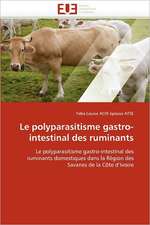The Use of Human Cells for the Evaluation of Risk from Physical and Chemical Agents
Editat de Amleto Castellanien Limba Engleză Paperback – 15 apr 2013
Preț: 401.74 lei
Preț vechi: 422.89 lei
-5% Nou
Puncte Express: 603
Preț estimativ în valută:
76.91€ • 79.10$ • 63.80£
76.91€ • 79.10$ • 63.80£
Carte tipărită la comandă
Livrare economică 17 februarie-03 martie
Preluare comenzi: 021 569.72.76
Specificații
ISBN-13: 9781475711196
ISBN-10: 1475711190
Pagini: 824
Ilustrații: XI, 809 p. 132 illus.
Dimensiuni: 178 x 254 x 43 mm
Greutate: 1.41 kg
Ediția:Softcover reprint of the original 1st ed. 1983
Editura: Springer Us
Colecția Springer
Locul publicării:New York, NY, United States
ISBN-10: 1475711190
Pagini: 824
Ilustrații: XI, 809 p. 132 illus.
Dimensiuni: 178 x 254 x 43 mm
Greutate: 1.41 kg
Ediția:Softcover reprint of the original 1st ed. 1983
Editura: Springer Us
Colecția Springer
Locul publicării:New York, NY, United States
Public țintă
ResearchCuprins
Lectures.- What do We Mean by the Expression Risk Assessment?.- The Search for Criteria to Assess the Risks Resulting from Exposure to Carcinogenic Agents.- Some Comments on the Use of Human Cells for Estimates of Risk.- The Strauss-Albertini Test for Direct Enumeration of Drug-Resistant Peripheral Blood Lymphocytes.- Induction of Sister Chromatid Exchange by Chemical Mutagens.- Dose-Response Relation of Chromosome Aberrations.- Mutagen-Induced Chromosome Damage in Man.- Repair of Radiation Damage in Mammalian Cells.- Repair and Expression of Aflatoxin B1-induced DNA Damage.- Parvoviral Probe for Assessing the Mutagenic Risk of Low Doses of Radiation and Chemicals Administered to Human Cells.- Assessment of Human Lymphoid Cell Damage Induced by Therapeutic Levels of 8-Methoxypsoralen and Long Wavelength Ultraviolet Radiation In Vitro.- The Mutagen Sensitivity Response of Cells from Individuals Heterozygous for DNA Repair Deficiency Genes.- Repair of Chemical Damage in Mammalian Cells.- Effects of Various Promoters on Cell Transformation by Simian Virus 40 Mutants.- Repair of Ultraviolet-Light-Induced Damage in Human Skin.- Dosimetry by Means of Measurement of Hemoglobin Alkylation and Risk Estimation Based on the rad-Equivalent Approach.- PUVA Therapy: Immunologic and Genotoxic Approaches to Risk Evaluation.- Parvoviral Probe of DNA Replication in Mammalian Cells Exposed to Genotoxic Agents.- Ultraviolet-Light-Induced Transformation of Human Primary Cells.- Use of Human Lymphoblastoid Cell Lines to Determine Cellular Hypersensitivty to Physical and Chemical Agents.- Cellular Studies on Patients with an Unusual Clinical Sensitivity to Ionizing Radiation.- Electrophilic Reactivity as a Measure of Genotoxic Potency.- SOS Functions Induced in Carcinogen-Treated Mammalian Cells.- Radiation-Induced Transformation in Rodent and Human Cells: Assay Systems and Uses in Risk Estimates.- Correlation of NCI and IARC Carcinogens with Their Mutagenicity in Salmonella.- A Review and Evaluation of Human Genetic Bioassay Data for Some Known or Suspected Human Carcinogens.- From Bacteria to Man, the Evolution of Mutagenicity Testing.- Genetic Bioassay Data on Some Known or Suspected Human Carcinogens.- The Search for Biological Models to Investigate Human Carcinogenic Risks: Human Pathology and Experimental Carcinogenesis Correlations at the Organ, Tissue and Cellular Level, In Vivo and In Vitro.- The Causes of Cancer: Quantitative Estimates of Avoidable Risks of Cancer in the United States Today.- Round Tables.- Reasons for Distrusting Human Risk Assessment Based Solely on In Vitro or Animal Test Results.- Quantitative Relationships, if Any, Between Human and Animal Carcinogenesis: Biological Aspects.- Qualitative and Quantitative Problems in the Extrapolation of Risk to Humans from Animal Data.- Risks from Ambient Chemicals and Radiations.- Human and Other Mammalian Cells: Their Role in Risk Assessment.- Measurements of DNA Repair Activity in Human Cells.- Risk Assessment for Low-Dose and Low-Dose-Rate Radiation.- Difference in Cancer Susceptibility among Individuals and What Determines the Differences.- Calibration and Monitoring of Human Population: Biological Aspects, Hemoglobin Alkylation and Radiation Equivalent Approach.- Communications.- Relaxation of Supercoiled DNA by DNA Modifying Agents: Detection by Gel Electrophoresis.- The MER Phenotype: Human Tumor Cell Strains Defective in Repair of Alkylation Damage.- Growth-Dependent and Age-Related Changes in the Free Amino Acid Pool of Human Diploid Fibroblasts.- DNA Fragmentation and Sister Chromatid Exchanges Induced by Commercial Auramine O, Purified Auramine, and Michler’s Ketone.- An Attempt to Determine the Origin of DNA Single-Strand Breaks Observed after Treatment of Mammalian Cells with Alkylating Agents.- Localization of Genes Involved in DNA Repair on Human Chromosomes by Using Cell Fusion.- In Vitro Studies on Chemical Carcinogenesis in Balb/c 3T3 Cells.- The Chemical Hazard of Anto-Implantation Assessed and Analyzed Both In Vitro and In Vivo.- Cellular Specificity in DNA Damage, Repair, and Replication during Chronic Carcinogen Exposure.- The Problem of Specificity in the Assessment of Risk from Chemicals and Radiation-Breast Cancer Models.- Author index.







